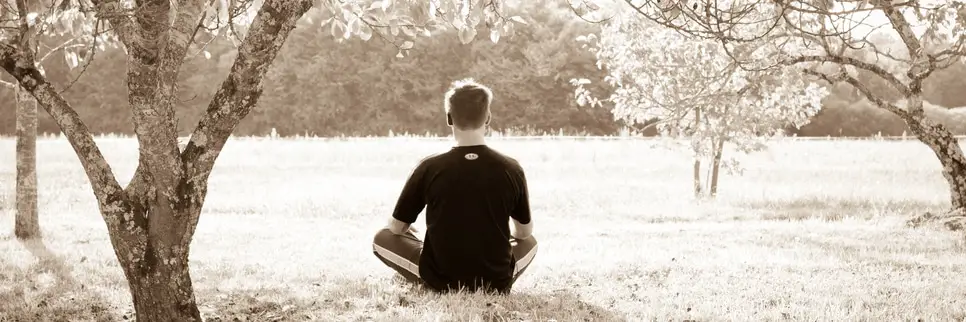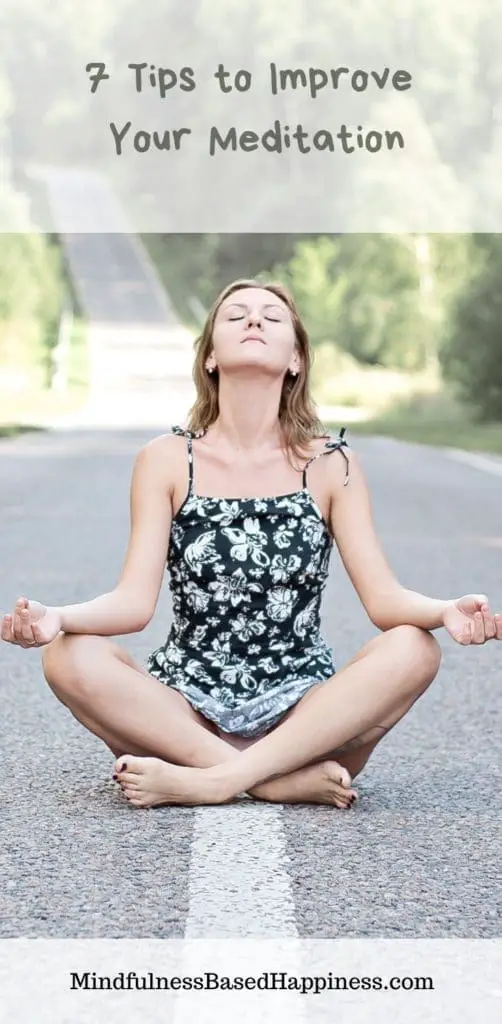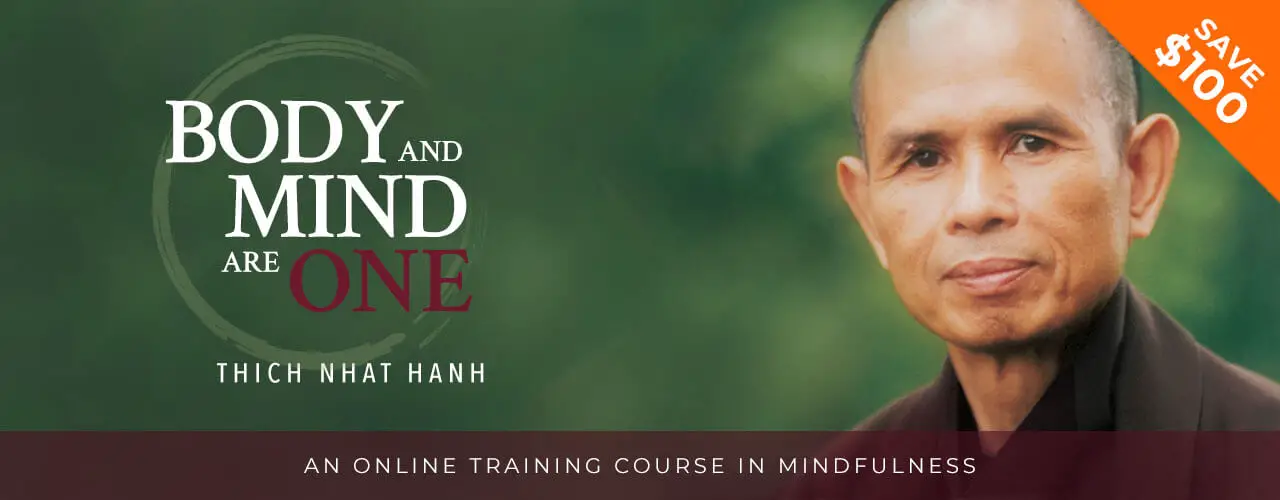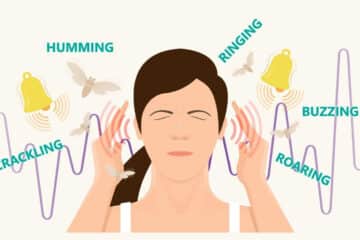7 Tips to Improve your Meditation
No matter how long you have been practicing mindfulness or meditation, we all have periods where we feel stuck. Where we would like to concentrate deeper, or have less mind wandering. Here are 6 tips I discovered that can dramatically improve your meditation.
If you are eager for the tips, just skip my story and click on the table of contents below.
My Story into a different practice
First off, I have been meditating since more than a decade, and my meditation app tells me that I have quite some mileage. The app indicates that I must have totaled more than 3000 hours of meditation.
Well, I do not put in all my meditation and I only started to use it after a few years, so it is an approximation.

But in any case, I meditated for a reasonable amount of time to be able to say something meaningful about meditation ;-).
But, although the benefits to me are clear (especially when I cannot meditate for some reason), I always felt that progress was slow.
Well, too slow. Since slow is to be expected.
My goal
My goal is rather outlandish. I want to achieve samatha, which is a highly concentrated mind. Buddhists also call this one-pointedness.

In any case, I realize most people will not want to achieve this since they seek out mindfulness practice mostly for stress relief. And that is perfectly fine.
But if one is striving for a goal, one can gauge if one is getting closer or not.
Am I making steps in the right direction? And the answer is yes, but tiny baby steps.
So I was frustrated. I was stuck and looking for a way forward. I have been introduced to the gradual path to samatha through a book by Alan Wallace called ‘The Attention Revolution‘ a few years ago. But although this is exactly what the doctor prescribed, a gradual path, the details on how to take the different steps were left a bit vague. It is the classic explanation that is given to monks who do almost nothing but meditation for months on end. And I have 3 kids and a full time job …
Saved by the bell
I was getting aware about the fact that I might need something like deliberate practice from books like ‘Grit‘ by Angela Duckworth or ‘Peak‘ by Anders Ericsson.
But deliberate practice entails a lot of steps and reflection. So having somebody who had done this work for you would be handy.
Luckily, I found ‘The Mind Illuminated‘ by Culadasa. And this was a complete game changer for me. All he said made so much sense to me.
And since I started implementing the advice from his book, my practice has grown tremendously.
Did I achieve shamata yet? No, that would be highly surprising. Give it another five to ten years, and then will see again.
In any case, most of the tips hereunder are from his book. So, enjoy!
Know why you are practicing
I know, I know, meditation instructors emphasize the whole time that we should set aside our goals when meditating.
And I agree.
But we need to be very clear on what we want out of our meditation.

Image by Christopher Michel
Usually, when we do not know where we want to go, we get nowhere. The same in meditation.
So take a few moments to reflect. Why are you meditating? And are you getting any closer to this goal? Because if something is not the right tool for you, you might be better of doing something else (I know, I talking against my own business, but I prefer honesty).
Now, your goal does not need to be as grand as to attain enlightenment, it could be just to be a little more relaxed or just 10% happier. You just need to be clear about why you are doing it or you will not continue.
And, as you will see in the tip about a starting ritual, it is good to also incorporate your goal in the beginning phase of the meditation.
Why?
Well, I found that for long periods of time, I was just doing the meditation out of habit. And this means I was dabbling. Not concentrating as good as I could. This also meant that my daydreams were going on for far too long.
Since I renewed my commitment to the practice, I see that this time had decreased dramatically.
Do not forget that the practice is called mindfulness meditation, and not daydreaming! So we need to put in the work to notice we are dreaming!
Practice Acceptance and patience

The very first thing you will need to do is accepting that it will not work right away. Accepting this fact will open the way for your patience to kick in so that you can do the work.
Now, this seems obvious, but unfortunately, we tend to forget this when we are meditating and our mind is giving us a hard time.
So, this quality of acceptance is something we should always keep in mind. When the mind wanders for the on thousandth time this week, then is when we need to refocus and cultivate acceptance.
So how do I do it?
I have 2 main techniques.
First is to remind myself off the cushion, like now, by reading about it. Re-establishing that indeed most people are prone to mind wandering.
Second is on the cushion. We need to be vigilant for when we start to get annoyed at our practice. Usually, that means we are resisting something. And it is precisely this that we need to stop doing.
Resistance is the opposite of acceptance. So when you notice what you are resisting (a fear, an argument with your boss, …), look at it. Very closely. And accept the fact that you have this issue with anger, fear or your boss.
Looking at it with the lens of acceptance has the potential to dissolve the resistance, opening it up for a real and lasting solution.
If you want to know more about this topic, I go in much more depth on this matter post on the 9 attitudes of mindfulness.
Have a good ritual to start the meditation
Now, when you want to advance further into your meditation, you need to use al the psychological hacks that you can.
And here, I’d like to make the case for using the Pavlov reflex. Pavlov noticed in dogs that if you ring a bell right before the dogs get food, they will start to get exited whenever the bell is rang, even if it is not dinner time.
Incidentally, my own dog has this when my oldest son puts on his shoes. He knows he can go for a walk then. Nowadays, my son needs to put the dog outside to be able to get his shoes on, else the dogs over enthusiasm prevents him from doing it 😀
So we need to do the same for our meditation practice so that the mind know it is time to start practicing. This will help it calm down.
What is a good starting ritual?
- Ring the bell
- Relax
- Review your motivation
- Set your intention
- Set your goal for this session
- Review possible distractions
Now, This can seem like a lot of work, but you can do all of this in a few minutes. A few minutes that will enhance the quality of your meditation, and, who are part of the meditation since you are bringing your attention toward all of these phases.

The details of the starting ritual
- Bell: The purpose of ringing the Bell is to delimit the time that you will practice. It tells your mind that now is the time to be mindful. It’s that simple.
- Relax: Almost all meditation traditions emphasize the need to have a relaxed attention. Else, one would not be able to sustain the long hours of meditation. So before you begin, try to relax your body a bit. The meditation will be so much more easy. But, if your body does not relax, do not get upset over it. Then you need acceptance and patience (reread the second tip).
- Motivation: as said in the tip on the why of your practice, you need to be clear on this point. And, if you rev up your enthusiasm before the sit because you remember why you practice, the mind will more naturally follow along.
- Intention: Resolve to practice diligently for the entire session. Recall that the best way to overcome resistance is by simply continuing to practice, without judging yourself.
- Goal: since this practice is set up in the framework of deliberate practice, you need to have small skills that you want to improve in a sit. And repeat and repeat this few skills until you aster them. What these exact skills are is a matter for a different post, but you need to get clear on that too. But for most of us, setting a goal to catch the distractions as early as we can is an excellent starting point. Also, remembering to follow the breath is a good goal to set. Just remember not to beat yourself up when you do not get tot the goal. that is not the point. The point is to improve a little bit each time. Until perfection.
- Distractions: Perform a quick inventory of things in your life that might come up to distract you. Acknowledge these thoughts and emotions and resolve to set them aside if they do arise. Again, expect to fail most of the time, but this will help to catch them just a little sooner than if you did not do the review.
Notice the good stuff
I said it and I repeat it, if you do not see the benefits of your meditation, you will not continue doing it.
Or will do it half halfheartedly.
Luckily for us, there are numerous opportunities during our meditation where we can reaffirm the good of the meditation.
The most obvious is when we get lost and find back our mindfulness. As this is a critical skill we need to master (returning out of distraction), we can use this moment for positive feedback.
So appreciate the fact that you are back. Give yourself the proverbial pat on the back and tell yourself with a half smile ‘yes, I did it’.
This gives positive feedback to the mind that we appreciate the fact of being mindful again.
Another thing that we can do it to be on the lookout for the pleasant feelings when we are fully present. Did you ever notice that when you are in the moment, you can feel this subtle joy?
Try it next time you are mindful. You will see there is a definite joyful feel to ‘just being’. You need to be on the lookout for this feeling. And when it arises, take some time to appreciate the feeling. Just see the pleasantness of the feeling. Be grateful. And realize that this feeling comes due to the work that you put into your meditation. It is one of the quick benefits you can get from your meditation
Obviously we should not cling to this feeling. It will ebb away. And sometimes we will have unpleasant feelings. But overall, when the mind is calm, the pleasant feelings will tend to resurface. So, be patient and diligent and these moment will come more often.
Do informal practices during the day
If you have ever done an MBSR or MBCT program, you will will be familiar with the 3 minute breathing space and the mindful reminders you are supposed to place around your house.
These practices are meant to bring some mindfulness into your day (for some overview of these practices, see my post on mindfulness exercises).
Three simple things you can easily implement are the following:
– Regularly do a 3 minute breathing space (see the video). This acts as a kind of reset during the day. At the end of the breathing space, form the intention to keep some of that mindfulness during the day.
– Identify a few things you do daily and make them into mindfulness practices. The most common ones are brushing your teeth or going to the bathroom.
– Do a daily mindful walk. If you can do it around some nature, but it can be in the city as well. Before you start, do not forget to do the starting ritual (see the tip on that higher on this page) so you keep on track. Mindful walking is one of my favorites. I value this practice as much as my sitting meditation. And what is more, it is also good for your health.
Obviously, if our mediation does not have any effect on our daily lives, it is useless to meditate. So it is only logical to bring some amount of mindfulness into our days with these practices.
But there is another reason to do these practices. If we spend 23 hours and 30 minutes being mindless, how can we expect to get to deep states of concentration?
So these small exercises are paramount for deepening our meditation practice. So I urge you to implement them in your day. Ideally we should be mindful during a sizeable fraction of our day.
But …
Do a daily mindful review

The previous section ended in a but …
You might guess the but means that being mindful during the day, even for small amounts of time beyond the few informal practices that you planned is, well, an almost super human thing to do.
At least in my experience, it takes up so much energy and I glide into mindlessness almost unnoticed.
So, we need a little bit of help outside of daily routine.
We can do a daily mindful review, and this is how to do it:
At the end of the day, pick one or two event that stand out for you, where you would liked to have more mindfulness to be able to handle the situation better. This can be an argument with somebody or some event your were scared or not productive enough.
Review the event, try to remember what happened exactly. Try to be as honest with yourself as possible. So if you acted in a way that you think you should not have, acknowledge and accept this fact. And also remind yourself that everybody makes mistakes. There is no use in beating ourselves up because that is counterproductive.
Now asses your degree of mindfulness during the event. Was is high or low? Then try to asses the consequences of this act. If we want to know how to better handle a situation, we need to know the consequences of both lines of conduct.
Then try to identify the deeper motives you had to engage in such behavior. Are these motives in line with your overall purpose in life? If not, strongly resolve to be more mindful the next time such a situation arises and to chose an other line of conduct that is more in line with your values.
Next time you will encounter a similar situation, you will become more mindful. And you will have a bit more choice.
But do not expect it to be solved by doing this exercise one. As with everything, you might need to revisit the same kind of situations a (great) number of times before you are fully satisfied with the outcome.
Don’t worry, and try to practice acceptance on this fact too.
Just trust me when I say this one practice can have an enormous effect on your life overall.
Know where you are

The whole discussion in the book ‘The Mind Illuminated‘ by Culadasa is based on the Tibetan gradual path to achieve calmness of mind in nine stages. This path describes all the hindrances and milestones the meditator will pass on his way to perfect one pointed concentration.
This path is divided in 9 steps with each his difficulties, achievements and skills to master.
But to be able to develop the appropriate skill set and overcome the difficulties, you first need to know where you are in the 10 steps.
Now, 99% of people are in the first three stages, which are considered beginner stages. And the tips given in this blog post are excellent for these stages but are actually designed to get you in the higher stages. So, if you want to progress beyond the beginner phase, you will need to asses where you are in the stages and start to apply very specific techniques. Alas, for the details of these techniques there is not room in such a short post.
If you want to do this, I highly recommend the book on which this post is based, ‘The Mind Illuminated‘ by Culadasa.
Meditate in group or do a retreat.
Well, this last tip is not something you can do on a daily basis, but I have always found that meditating in a group improved the quality of my meditation.
I have no idea why, but it seems I can concentrate better somehow. So if you have a meditation center nearby or know a couple of friends who meditate, try to go there a couple of times per week.
The other aspect of this tip is to go on retreat. Obviously you will be meditating with other people, but the intensity of the training will surely give your meditation practice a boost.
Going on a retreat is something I try to do once or twice a year because it is not so easy to combine with family life at this moment. But a great alternative is to hold an at home retreat. This can last form half a day to a full week. If you want to investigate this possibility, you can read my post with a complete plan to make your at home meditation retreat a success.
Up to you
I’d love to hear if you use any of these methods with any success or if you plan to implement one of them.
Feel free to let me know in the comments.
Featured image by Nickolai Kashirin

Hi, I’m Olivier Devroede and I have been meditating seriously since 2009.
Due to the great benefits I have seen in meditating, I decided to become an MBSR trainer myself and start a blog.





